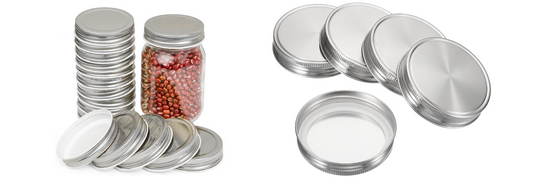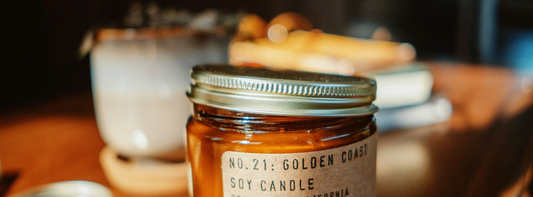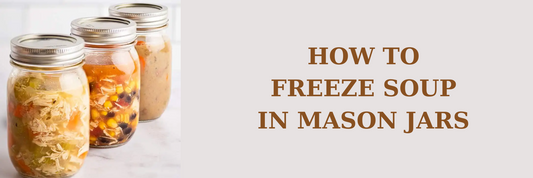Recycling is a key component of sustainable living, and glass jars are widely accepted in most recycling programs. But what about their lids? Can glass jar lids be recycled? The answer depends on the material of the lid, local recycling policies, and how the lid is processed. In this article, we'll explore the recyclability of metal, plastic, and glass lids, the best practices for recycling them, and common mistakes to avoid.
Can You Recycle Glass Jar Lids?
Glass jar lids come in different materials, including metal, plastic, and glass, and each type has different recycling rules. In most cases:
- Metal lids are recyclable but should be removed from jars before recycling.
- Plastic lids may or may not be accepted depending on local policies.
- Glass lids are often not recyclable in standard curbside programs.
Understanding how to handle each type properly ensures they don’t end up in landfills unnecessarily.

Types of Glass Jar Lids and Their Recyclability
1. Metal Lids from Glass Jars
Metal lids, such as those found on jam, pickle, and pasta sauce jars, are usually made of steel or aluminum. These materials are widely accepted in recycling programs.
How to Recycle Metal Lids
- Remove the lid from the jar. Metal and glass are recycled separately, so keeping them together can cause issues at the recycling plant.
- Rinse the lid. Any leftover food residue can contaminate the recycling process.
- Check your local recycling guidelines. Some areas require metal lids to be placed inside a metal can before recycling to prevent them from getting lost during sorting.
- Flatten small metal lids inside a larger metal can. Once full, crimp the top of the can shut so the lids don’t fall out.

Can You Leave Metal Lids on Glass Jars?
No. While some recycling facilities can process them together, most prefer them to be separated. Leaving lids on glass jars can trap air inside, making it harder to crush and process the materials properly.
2. Plastic Lids from Glass Jars
Many glass jars come with plastic lids, such as those on peanut butter, spice, or yogurt jars. The recyclability of plastic lids depends on the type of plastic and local recycling policies.
How to Recycle Plastic Lids
- Check the recycling number on the lid. Some plastic lids are made from recyclable plastics (e.g., #1 PET or #2 HDPE), while others are not accepted in curbside recycling.
- Rinse the lid thoroughly. Any remaining food or grease can contaminate recycling batches.
- Follow local recycling rules. Some facilities accept plastic lids if attached to the jar, while others require them to be removed.
- Consider reusing plastic lids. If recycling isn’t an option, repurpose them for storage or DIY projects.
Are Plastic Lids from Glass Jars Recyclable?
It depends. Some facilities accept them, while others don’t. Always check with your local waste management services.

3. Glass Lids from Glass Jars
Glass lids, such as those found on mason jars, clamp-seal jars, or decorative containers, are often made from tempered glass. Unlike regular glass jars, tempered glass cannot be recycled in standard curbside programs.
Why Can’t Glass Lids Be Recycled?
- Different melting points. Tempered glass melts at a different temperature than regular glass, making it incompatible with glass recycling streams.
- Strengthened structure. The chemical treatment used to strengthen tempered glass prevents it from being broken down in the same way as bottles and jars.

How to Dispose of Glass Lids
- Check local guidelines. Some areas have special drop-off locations for tempered glass recycling.
- Reuse the lids. Glass lids are durable and can be repurposed for storage, crafts, or home projects.
- Dispose of broken glass lids safely. Wrap them in newspaper or place them in a sturdy box before discarding them in the trash to prevent injuries.
Best Practices for Recycling Glass Jars and Lids
To maximize recycling efficiency, follow these best practices:
Always Remove Lids Before Recycling Jars
Glass and metal are processed separately, so separating them ensures they are recycled correctly.
Clean Jars and Lids Before Recycling
Residue from food or liquids can contaminate other recyclables. Rinse jars and lids before placing them in the bin.
Check Local Recycling Rules
Recycling guidelines vary by location. Some areas allow plastic lids, while others require them to be discarded.
Consider Reuse Before Recycling
If your lids are not accepted in recycling programs, repurpose them for storage, crafts, or home organization.
Common Recycling Mistakes to Avoid
Leaving Lids on Jars
Many people assume glass jars and their lids can be recycled together, but this is often not the case. Remove lids before recycling.
Recycling Contaminated Lids
Food residue can ruin an entire batch of recyclables. Make sure lids are clean and dry before recycling.
Assuming All Plastic Lids Are Recyclable
Not all plastic lids are accepted. Check local guidelines to confirm whether they should be recycled or discarded.
Putting Glass Lids in the Glass Recycling Bin
Tempered glass is not recyclable with regular glass. Dispose of it properly or find a way to reuse it.
Conclusion: Are Glass Jar Lids Recyclable?
The recyclability of glass jar lids depends on their material:
- Metal lids – Recyclable (remove them first)
- Plastic lids – Sometimes recyclable (check local guidelines)
- Glass lids – Not typically recyclable curbside (reuse or dispose safely)
By following the right recycling practices, you can reduce waste and help protect the environment. Always check your local recycling rules and consider reusing lids whenever possible!









